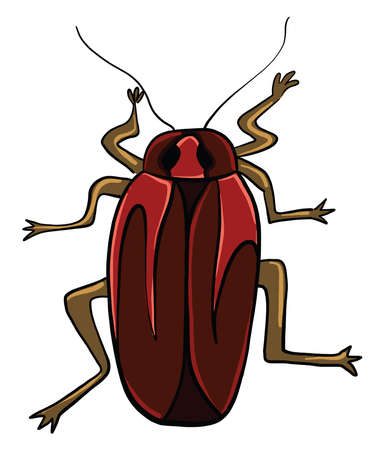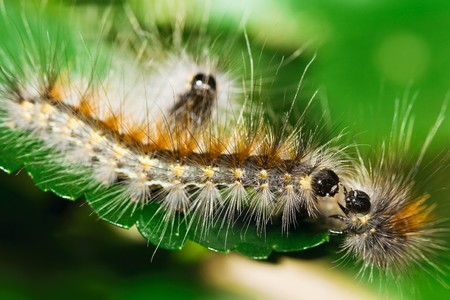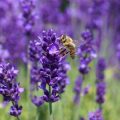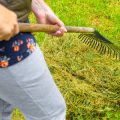Introduction to Microscopic Garden Pests
Every American gardener, whether tending a backyard vegetable patch or cultivating a lush flower bed, will eventually encounter microscopic garden pests. Among the most troublesome are mites, thrips, and aphids—tiny insects and arachnids that can wreak havoc on your plants before you even realize theyre there. These pests are often so small that they escape notice until theyve already caused significant damage. Understanding the differences between these common invaders is essential because each species requires a specific approach for effective control. Proper identification allows gardeners to choose the safest and most effective methods to protect their plants while minimizing harm to beneficial insects and the surrounding environment. By learning to recognize the signs of infestation early, you can keep your garden healthy and thriving throughout the growing season.
2. How to Identify Mites, Thrips, and Aphids
Recognizing microscopic garden pests early is crucial for effective control. While mites, thrips, and aphids are tiny and often hard to spot, each pest has distinct characteristics, damage patterns, and behaviors that can help gardeners identify them before a small problem becomes a full-blown infestation.
Physical Characteristics
| Pest | Size | Color/Shape | Key Features |
|---|---|---|---|
| Mites (Spider Mites) | 0.2–0.5 mm | Reddish, greenish, or yellow; oval body | Eight legs; fine webbing on plants |
| Thrips | 1–2 mm | Yellow, brown, or black; slender and elongated | Fringed wings; fast-moving when disturbed |
| Aphids | 1–3 mm | Green, black, brown, pink; pear-shaped body | Cornicles (tube-like structures) on rear; often found in clusters |
Damage Signs
- Mites: Fine stippling or speckling on leaves, yellowing, leaf drop, and delicate webbing are telltale signs. Look for damage on the underside of leaves where mites congregate.
- Thrips: Silvery or bronze streaks across foliage, distorted new growth, and tiny black spots (frass) indicate thrip feeding. Flower petals may appear streaked or deformed.
- Aphids: Curled or puckered leaves, sticky honeydew residue, sooty mold growth on honeydew, and visible clusters of soft-bodied insects are common indicators.
Pest Behaviors and Habits
- Mites thrive in hot, dry conditions and reproduce rapidly. They prefer the undersides of leaves and can quickly establish colonies that are hard to eradicate once established.
- Thrips are highly mobile and difficult to see without magnification. They hide inside flowers and young leaf tissue during the day and can spread plant viruses as they feed.
- Aphids multiply quickly in spring and early summer. They use their piercing mouthparts to suck sap from tender plant parts and attract ants due to their honeydew secretion.
Quick Tips for Identification:
- Use a magnifying glass or smartphone macro lens to inspect suspected areas closely.
- Check both sides of leaves regularly—many microscopic pests prefer hidden spots.
- If you spot unusual leaf discoloration or curling, inspect further for these pests before applying treatments.
Being able to distinguish between mites, thrips, and aphids ensures you choose the right control strategies for your garden’s unique challenges.

3. The Impact of These Pests on Your Garden
Commonly Affected Plants
Mites, thrips, and aphids are notorious for targeting a wide range of garden favorites across the United States. Roses, tomatoes, cucumbers, beans, peppers, lettuce, and even houseplants are frequently at risk. Fruit trees like apples and peaches can also fall victim to these microscopic invaders. Ornamental plants such as marigolds, petunias, and azaleas are not immune either, making nearly every corner of a garden susceptible.
Types of Damage Caused
The harm inflicted by these pests varies but is often easy to spot once you know what to look for. Mites typically suck sap from leaves, causing stippling, yellowing, or bronzing; their feeding can leave fine webbing under leaves. Thrips scrape at plant surfaces and suck out cell contents, resulting in silvery or discolored patches and distorted growth. Aphids cluster on new shoots and undersides of leaves, excreting sticky honeydew that leads to sooty mold and further plant stress. In all cases, the affected plants may show curled leaves, stunted growth, reduced flowering or fruiting, and increased vulnerability to diseases.
Consequences of Unchecked Infestations
If infestations are ignored or left untreated, the consequences can be severe for both individual plants and the broader garden ecosystem. Heavy mite populations can defoliate vegetables and ornamentals alike. Thrips can transmit plant viruses that devastate harvests in crops like tomatoes and peppers. Aphid colonies multiply rapidly—one small group can turn into thousands within weeks—draining vigor from plants and spreading pathogens. Over time, unchecked infestations may lead to entire plant loss, significant drops in yields for homegrown fruits and veggies, unsightly landscapes, and a cascade of secondary pest problems as weakened plants attract other insects or fungal infections.
4. Prevention and Early Detection Strategies
Keeping your garden free of microscopic pests like mites, thrips, and aphids is much easier when you focus on prevention and early detection. American gardens, from backyard veggie patches to lush ornamental beds, benefit from proactive monitoring and smart practices tailored to local conditions. Here are some expert tips and best practices for keeping infestations at bay and spotting trouble before it spirals out of control.
Regular Monitoring: Your First Line of Defense
Inspect your plants at least once a week, paying close attention to the undersides of leaves, stems, and any new growth where pests tend to gather. Use a magnifying glass for better visibility, especially with tiny mites and thrips. Early detection allows for targeted action before populations explode.
Best Times & Places to Check
| Garden Area | Key Times to Monitor |
|---|---|
| Vegetable Gardens | Early morning or late afternoon; focus on young shoots |
| Flower Beds | Weekly during spring and summer; inspect blooms and buds |
| Indoor/Greenhouse Plants | Every 2-3 days; check all surfaces due to higher risk of rapid spread |
Cultural Practices for Pest Prevention
- Healthy Soil: Well-draining soil with good organic matter supports robust plants that resist pests.
- Avoid Overcrowding: Proper spacing improves air circulation, making conditions less favorable for mites and aphids.
- Water Management: Water early in the day to reduce humidity overnight, which can encourage pest buildup.
Choosing Resistant Varieties
Selecting pest-resistant plant varieties whenever possible can drastically cut down on problems. Local garden centers often carry varieties bred for resilience against common regional pests.
Physical Barriers & Traps
- Use floating row covers over young crops to block flying thrips and aphids.
- Sticky traps can catch winged aphids and thrips before they settle on your plants.
Pro Tip: Rotate Crops Each Year
This disrupts pest life cycles, reducing the likelihood of recurring infestations—especially important for vegetable gardeners across diverse U.S. climates.
Community Engagement & Local Resources
If you’re gardening in a community plot or sharing space with neighbors, coordinate monitoring efforts. Local cooperative extension offices offer pest alerts tailored to your region—sign up for updates or workshops for extra support in staying ahead of infestations.
5. Natural and Chemical Control Methods
Effectively managing microscopic garden pests like mites, thrips, and aphids requires a balanced approach that prioritizes both plant health and environmental safety. Here are several proven methods, from organic solutions to carefully selected chemical treatments, all suitable for home gardeners in the United States.
Organic Treatments for Pest Control
Many gardeners prefer starting with natural remedies to minimize impact on pollinators and beneficial insects. Horticultural oils and insecticidal soaps are effective against mites, thrips, and aphids by suffocating them or disrupting their cell membranes. Neem oil, derived from the neem tree, is another popular organic option that interferes with pest reproduction and feeding without harming most beneficial species when used as directed. Regular application early in the morning or late in the afternoon helps avoid leaf burn and maximizes effectiveness.
Beneficial Insects: Nature’s Pest Patrol
Introducing or attracting natural predators is a sustainable way to keep pest populations under control. Ladybugs and lacewings are voracious consumers of aphids, while predatory mites target pest mites without harming your plants. Minute pirate bugs are excellent allies against thrips. Consider planting native flowering plants to attract these helpers, or purchase beneficial insects from reputable suppliers for targeted releases when infestations are detected.
Cultural Practices for Prevention
Healthy gardening habits can dramatically reduce pest problems. Rotate crops annually, remove plant debris promptly, and use mulch to discourage pests from settling in your beds. Inspect new plants carefully before introducing them to your garden to avoid accidental infestations.
Chemical Options: When Organic Isn’t Enough
If organic methods fail to provide adequate control, certain chemical pesticides may be necessary—always as a last resort. Choose products labeled specifically for use against mites, thrips, or aphids and approved for home garden use in the U.S., such as those containing pyrethrins or insect growth regulators (IGRs). Always follow label instructions closely, applying only as needed and targeting affected areas to protect pollinators and other non-target organisms.
Integrated Pest Management (IPM): The Best of Both Worlds
The most effective long-term strategy combines these approaches in an Integrated Pest Management (IPM) plan. Monitor your garden regularly, intervene early with organic options, support beneficial insects, and reserve chemical controls for severe outbreaks. By blending prevention with targeted action, you can keep mites, thrips, and aphids in check while preserving a healthy ecosystem in your American garden.
6. When to Call in the Pros
If you’ve tried every home remedy and over-the-counter solution but still find your garden plagued by mites, thrips, or aphids, it might be time to consider professional pest control. Recognizing when to bring in experts can save you significant time, money, and frustration—plus help protect the health of your plants in accordance with U.S. pest management standards.
Signs It’s Time for Professional Help
Some clear indicators that you need a pro include persistent infestations despite repeated DIY treatments, rapid pest population explosions, or damage that spreads quickly from plant to plant. Also, if your garden includes rare, expensive, or highly sensitive plants, professional intervention is often the safest route.
Complex Infestations Require Expertise
Mites, thrips, and aphids can develop resistance to common pesticides or hide in places that are hard to reach. Professionals have access to commercial-grade treatments and advanced Integrated Pest Management (IPM) techniques approved by the Environmental Protection Agency (EPA). This ensures both effective pest elimination and safety for your family and pets.
Understanding U.S. Pest Control Standards
In the United States, licensed pest control professionals must follow strict guidelines set by federal and state agencies. These standards prioritize environmentally responsible methods—such as targeted application of chemicals, biological controls, and ongoing monitoring—to minimize harm to beneficial insects and local ecosystems.
Benefits of Professional Pest Management
Beyond simply eliminating pests, pros offer regular inspections and customized treatment plans tailored to your specific garden environment. They can also provide education on prevention strategies so future infestations are less likely.
When in Doubt, Reach Out
If you’re unsure whether your mite, thrip, or aphid problem warrants professional help, most reputable companies offer consultations or inspections at little or no cost. Remember: catching an infestation early with expert guidance is often the best way to keep your microscopic garden pests under control while staying compliant with American safety standards.


